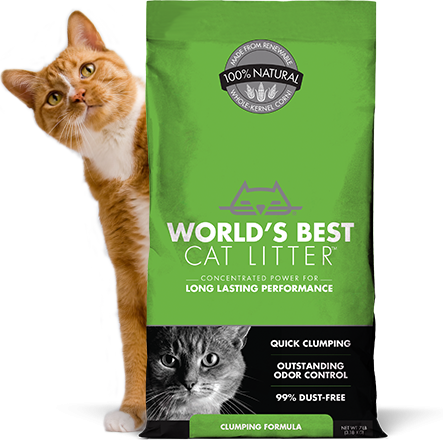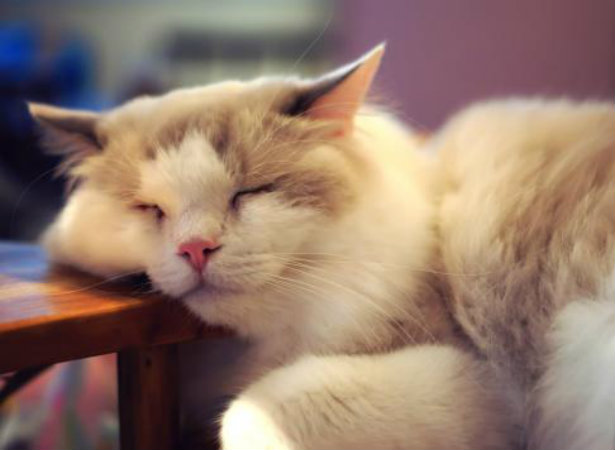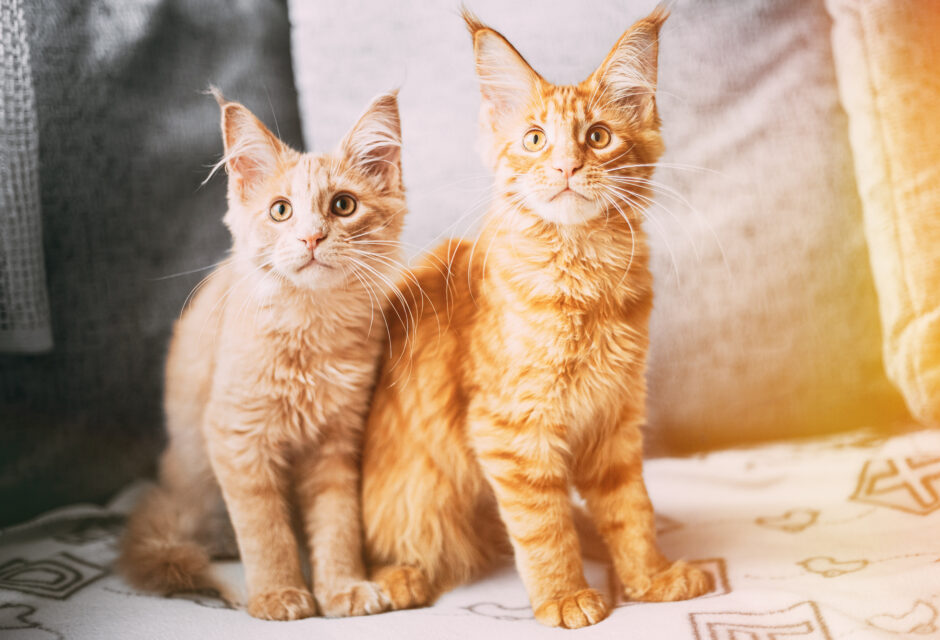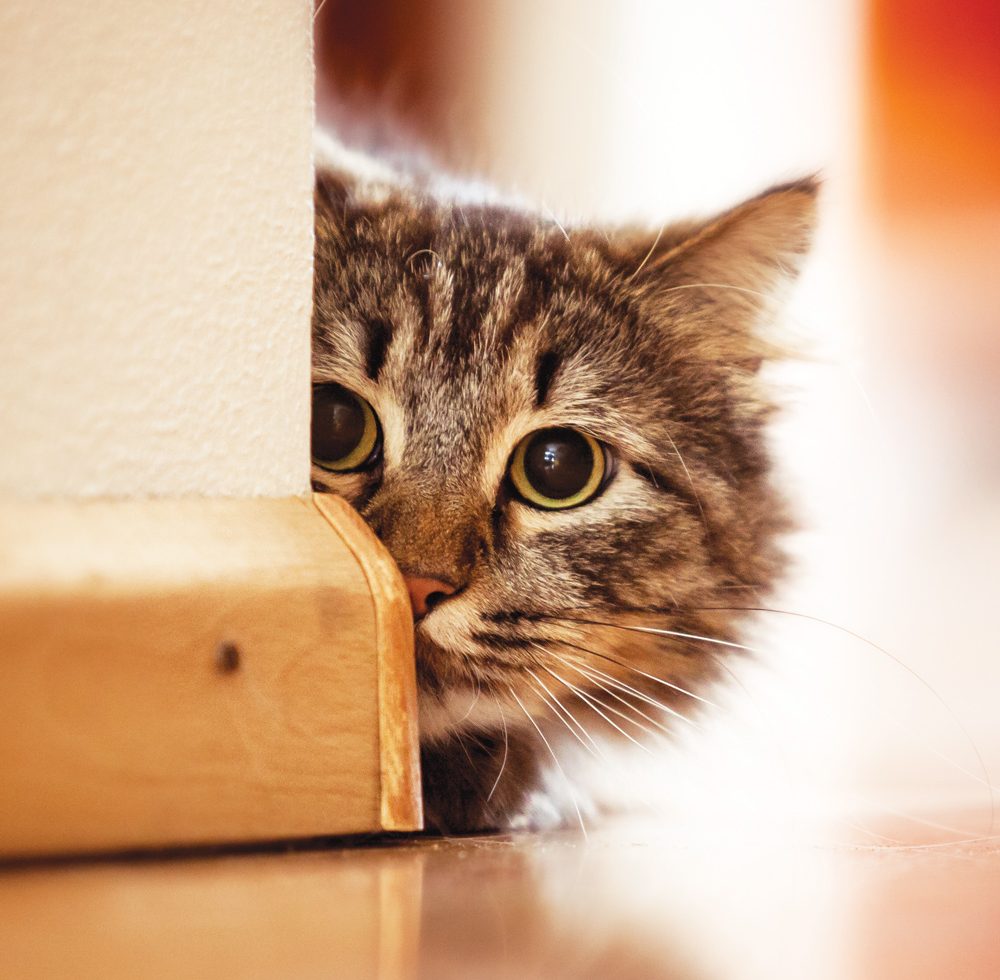
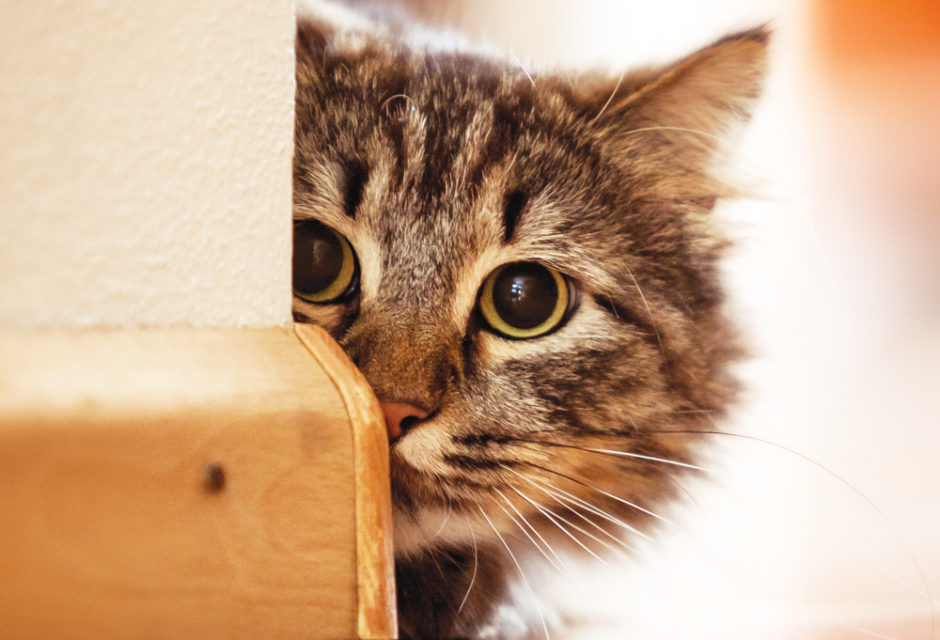
Why Your Cat Needs to Play and How To Do It Right!
How to use play to benefit your cat—and prevent behaviour issues
My tortoiseshell cat, Melina, loves to play soccer. Anything of an appropriate size will do, whether it’s a piece of scrunched up paper or an official cat toy. Her favourite is a ball with a bell that goes tinkle, tinkle as she dribbles it across the room. Solo play like this is important to cats, but so is interactive play with us; providing opportunities for play is one of the central tenets of good cat welfare. But can play help to prevent or reduce behaviour problems? And why is it so important?
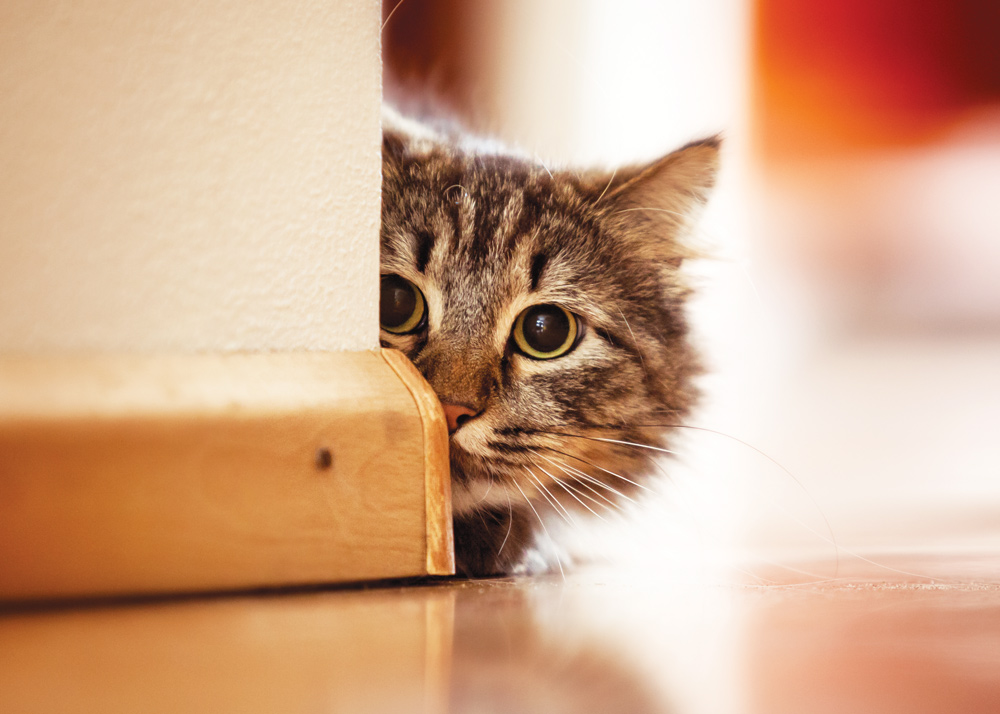
Photo: Joop Snijder Photography/shutterstock.com
“We see play across the animal kingdom,” says Dr. Mikel Delgado, Certified Cat Behavior Consultant at Feline Minds and Post-Doctoral Research Fellow at UC Davis School of Veterinary Medicine. “We believe that play serves functions for animals including allowing them to practice behaviours that they might need later. Those could be social interactions like fighting or they could be more day-to-day survival type interactions like hunting. We think that cats practice hunting through what we consider play.”
Making time to play with your cat every day is important. In a study reported in the Journal of Veterinary Behavior, people who played with their cat for five minutes at a time were less likely to say their cat has a behaviour problem than those who only played with their cat for one minute. The frequency of play did not make a difference in this study. Even so, it’s important to think about your own cat and what they need, says Dr. Beth Strickler, veterinary behaviourist at Veterinary Behavior Solutions in Tennessee and co-author of this research. “Every cat is an individual, and a cat has individual preferences for not only type of play but for the duration of their play,” she says.
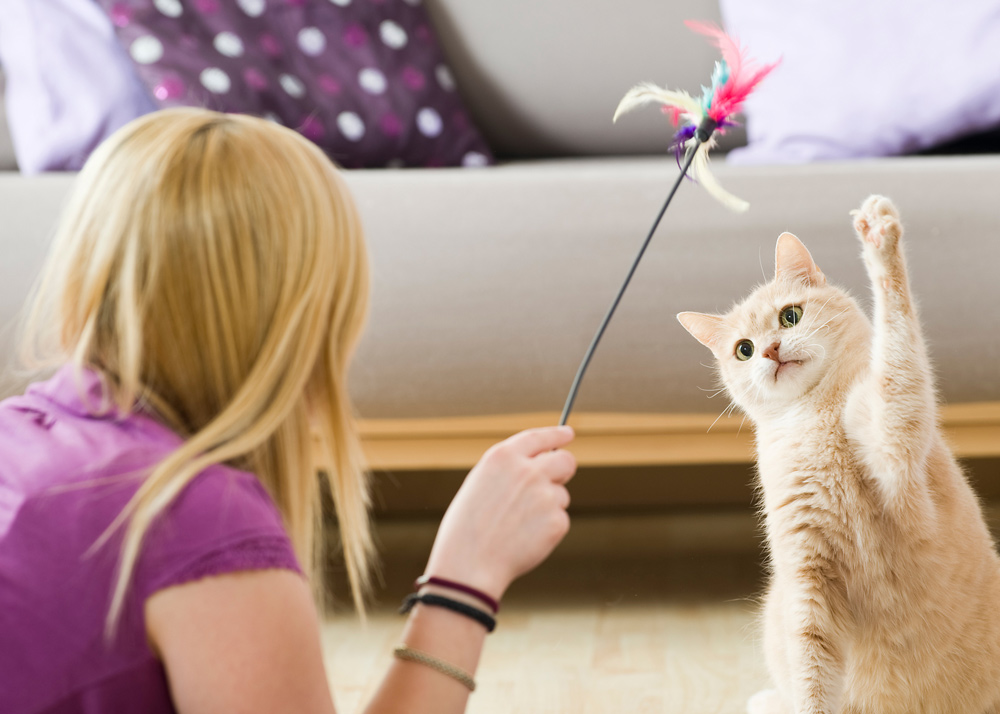
Photo: DoraZett/stock.adobe.com
The Types Of Toys Your Cat Should Have
“Thinking about the most common prey types that cats hunt can help you choose your toy collection,” says Dr. Delgado. That means things that look like mice, birds, snakes, insects, and rabbits or squirrels. And interactive toys, called wand toys or teasers, are great fun too.
In Dr. Strickler’s study, a furry toy mouse was the most popular cat toy and remains a firm favourite. But since that research was completed, there are “all these phenomenal cognitive toys that we have now,” says Dr. Strickler, such as puzzle toys that make cats work to get food out. Before spending a lot of money, she recommends to “ask yourself what the cat likes to do. Does the cat like to play with its paws and move things around? Does the cat like to get inside things and hide? Does the cat like to jump across things? Is it more of a physical cat? Does it like to pounce on things?” That information can help you to choose toys.
And you don’t have to spend a lot of money. “Cats love a crinkled-up ball of paper or a bottle cap more than many commercial toys!” says Ingrid Johnson, Certified Cat Behavior Consultant of Fundamentally Feline in Atlanta, GA. Cats also like novelty when it comes to toys, so it is also a good idea to rotate them. “To bring life to old toys, I recommend marinating them in your cat’s scent enrichment of choice: catnip, silvervine, valerian, Tatarian honeysuckle etc.,” she says.
Another easy option is a cardboard box. “Environmental changes such as brown paper bags, cardboard boxes, moving a cat condo to a new window (with a bird feeder) can be stimulating,” says Ingrid. Dr. Strickler says she loves boxes as places to put things in and hide things for the cat to find.
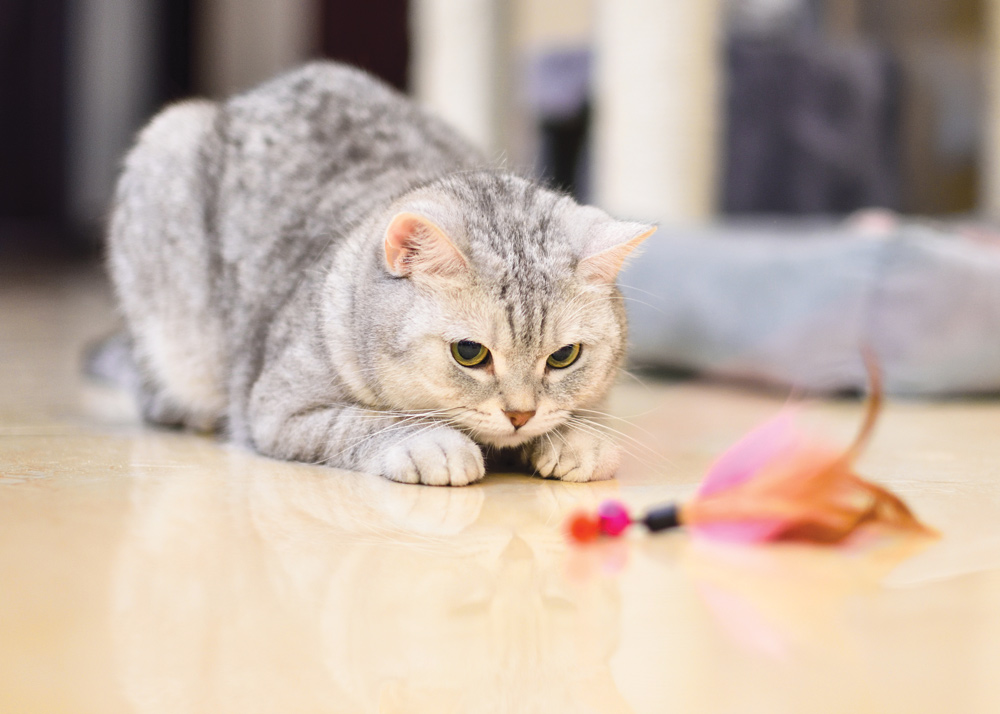
Photo: WaitforLight/stock.adobe.com
Play Is Needed Throughout Your Cat’s Life
Play is fun for cats of all ages. Though it’s easier to play with kittens—they’re more physically active, jumping around, climbing, doing backflips, and so on—even senior cats like to play, notes Dr. Delgado. And while it’s especially important to think of safety with kittens, it matters to all cats. Always put interactive toys away when not in use so there is no risk of the cat getting tangled in or strangled by the string.
Many cats like toys that make a noise, like those with bells or squeaks, but shy cats may prefer quiet toys, such as bug-like toys. For cats that are obese or not used to moving around very much, Dr. Strickler suggests starting with a lickable type of toy, where they will have the sensory experience of licking food off a textured surface. Another great option for these cats is clicker-training them to move from one spot to another (e.g. to follow your hand or a target stick).
In general, kittens and young cats will need longer play sessions, although some older cats may surprise you with their enthusiasm. Since a typical hunting sequence is five to 10 minutes, that’s a good length of time to aim for, but senior cats may like longer but less intense sessions. Whatever the age of your cat, begin to slow things down as you get near the end of the session. Then, instead of abruptly taking the toy away, always let your cat catch their “prey.” It’s a good idea to give your cat a toy mouse, a food puzzle toy, or a treat if you prefer, so that they actually get something at the end. Cats seem to play more when hungry, so timing play sessions for just before mealtime is a good idea. Try to make time to play with your cat two to three times a day for young cats and at least once a day for an older cat, and then adjust if needed.
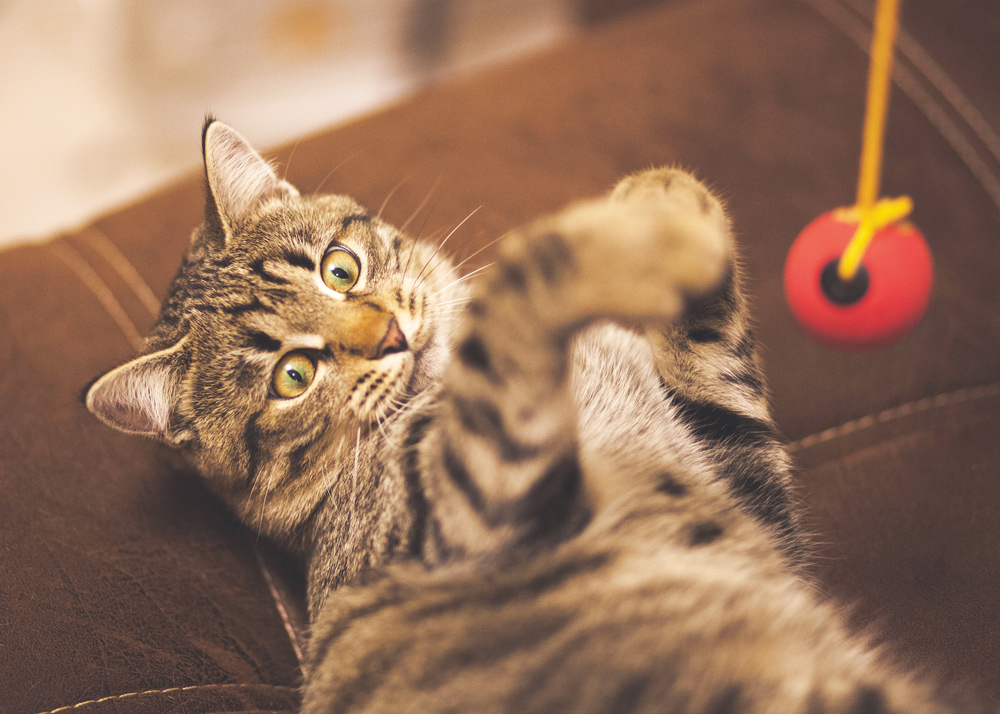
Photo: Anastasia Sokolenko/shutterstock.com
If your cat is bored, you may see behavioural problems such as:
- Increased stress and anxiety
- Decreased activity
- Aggression to other cats in the home
- Aggression to family members
- Excessive or decreased grooming
Play can help with various issues, from a shy or despondent cat to aggression. Always see your vet first because behaviour problems can have a medical cause.
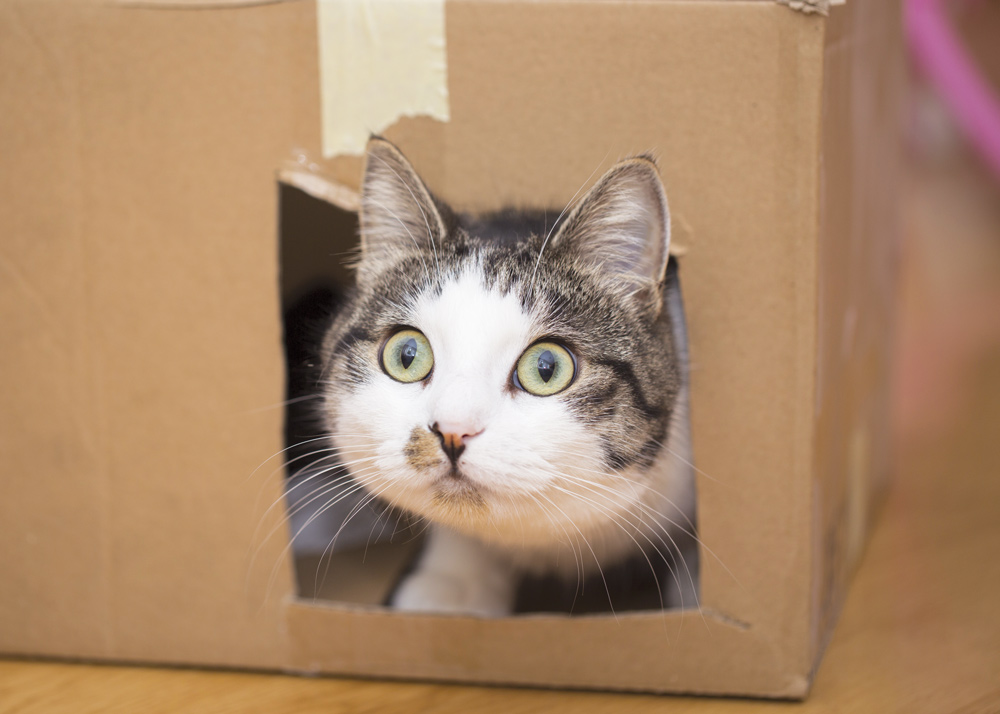
Photo: kmsh/bigstock.com
How To Tell If Your Cat Needs More Play
“Most people need to do more,” says Dr. Strickler. Play can be especially helpful for cats that are stressed. And when a cat has behaviour issues, such as aggression between cats in a multi-cat home or attention-seeking behaviours, more play is part of the behaviour plan because it counts as enrichment. Behaviour modification and medication will likely also be needed for behaviour problems, and for cats who are aggressive to people, care should be taken to ensure play is safe. But what are the signs a cat guardian should look out for that mean they need more play? “Attacking your ankles!” says Dr. Delgado. Learning to read your cat’s body language will help you determine how much play time your cat needs. Sometimes people think their cat is soliciting petting when actually they would prefer to play.
In addition to ensuring cats have toys to play with on their own—like Melina and her soccer toys—we should make time for interactive play with our cats, as well as make small, interesting changes to their environment, like adding a cardboard box. And remember, it’s not just about the chase, but the seeking, hiding, stalking, and pawing too. So, relax, take your time, and watch your cat having fun.
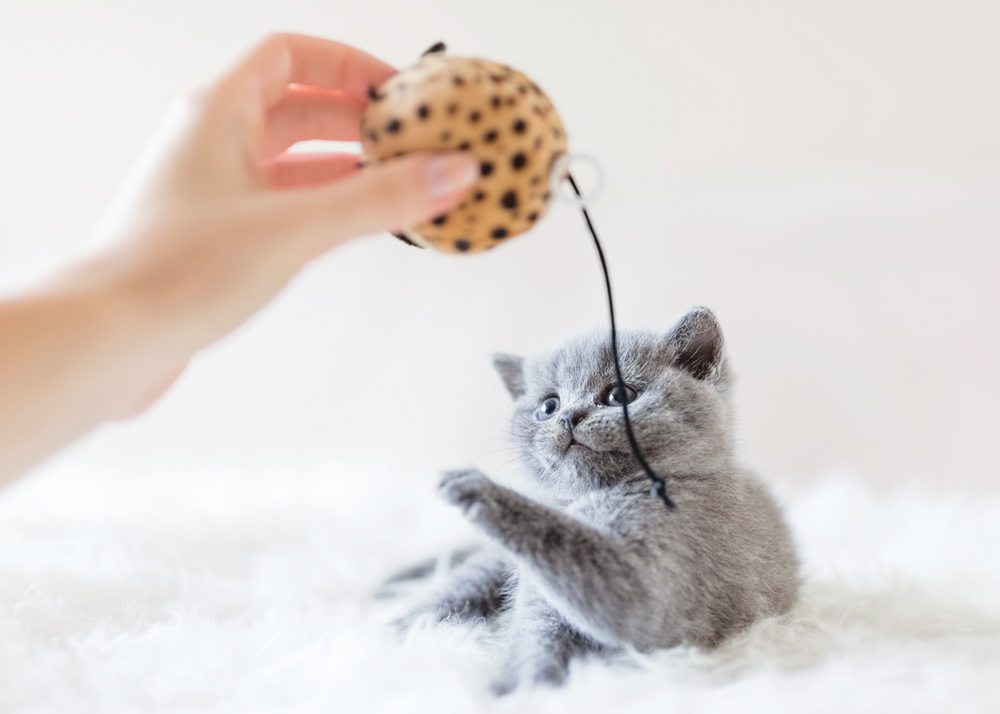
Photo: Photocreo Bednarek/stock.adobe.com
Tips for Engaging Your Cat In Play From Dr. Mikel Delgado
- Rotate toys within and between play sessions: Cats can get bored with the same toy, so make play sessions more effective by changing out toys every few minutes, or when your cat seems to lose interest. For many cats, you will see a renewal in excitement to play!
- It’s not just visual: Don’t forget to engage all of your cat’s senses while playing. Move the toy in tissue paper to create exciting rustling sounds. Let your cat hold the toy briefly from time to time so they can fully inspect how it feels and smells (or even tastes!).
- Act like prey: What would a bird or mouse do? Try to mimic those behaviours with the toy. Vary your movements, try to hide behind or under objects, flutter around, freeze in fear, and most importantly…don’t just poke your cat with the toy. No bird or mouse would wittingly walk up to their predator.
- Go slow: Sometimes less is more. Cats are stalk-and-rush hunters and enjoy the “watching” part of play. Try slowing the toy down, and more importantly, varying your speed. You’ll know your cat is hooked when you see them staring, sneaking up, and doing the infamous pre-pounce “butt wiggle.”
- Play on a routine: Cats thrive on stability in their environment. Try to play on a rough schedule each day so your cat can look forward to this daily interaction with you.
- Put away interactive toys when not in use: Toys with strings and wires are not safe to leave out with your cat. Always secure them in a closet, drawer or toy chest when you aren’t actively using them.
Join the newsletter and never miss out on cat content again!
"*" indicates required fields
By clicking the arrow, you agree to our web Terms of Use and Privacy & Cookie Policy. Easy unsubscribe links are provided in every email.






